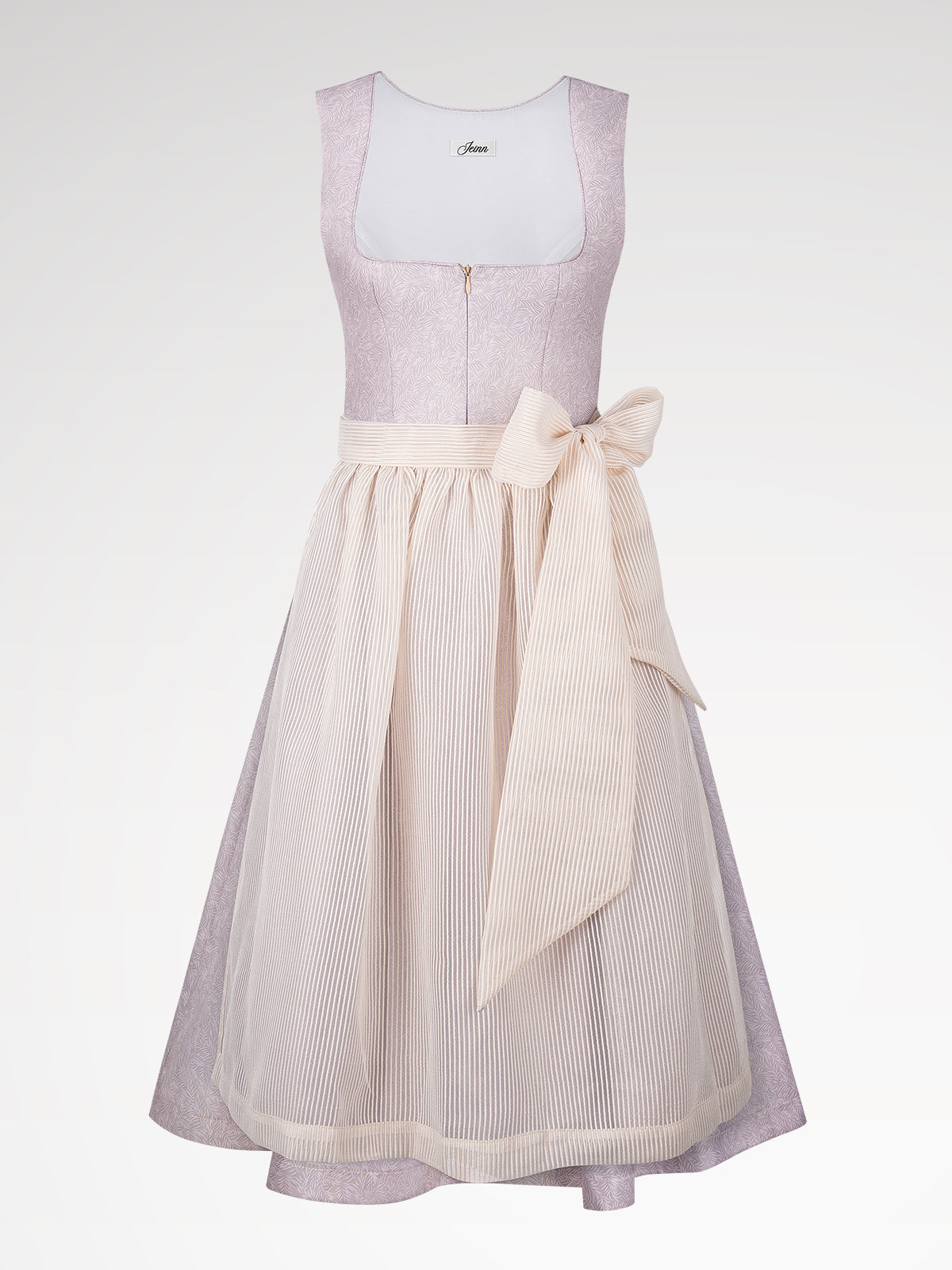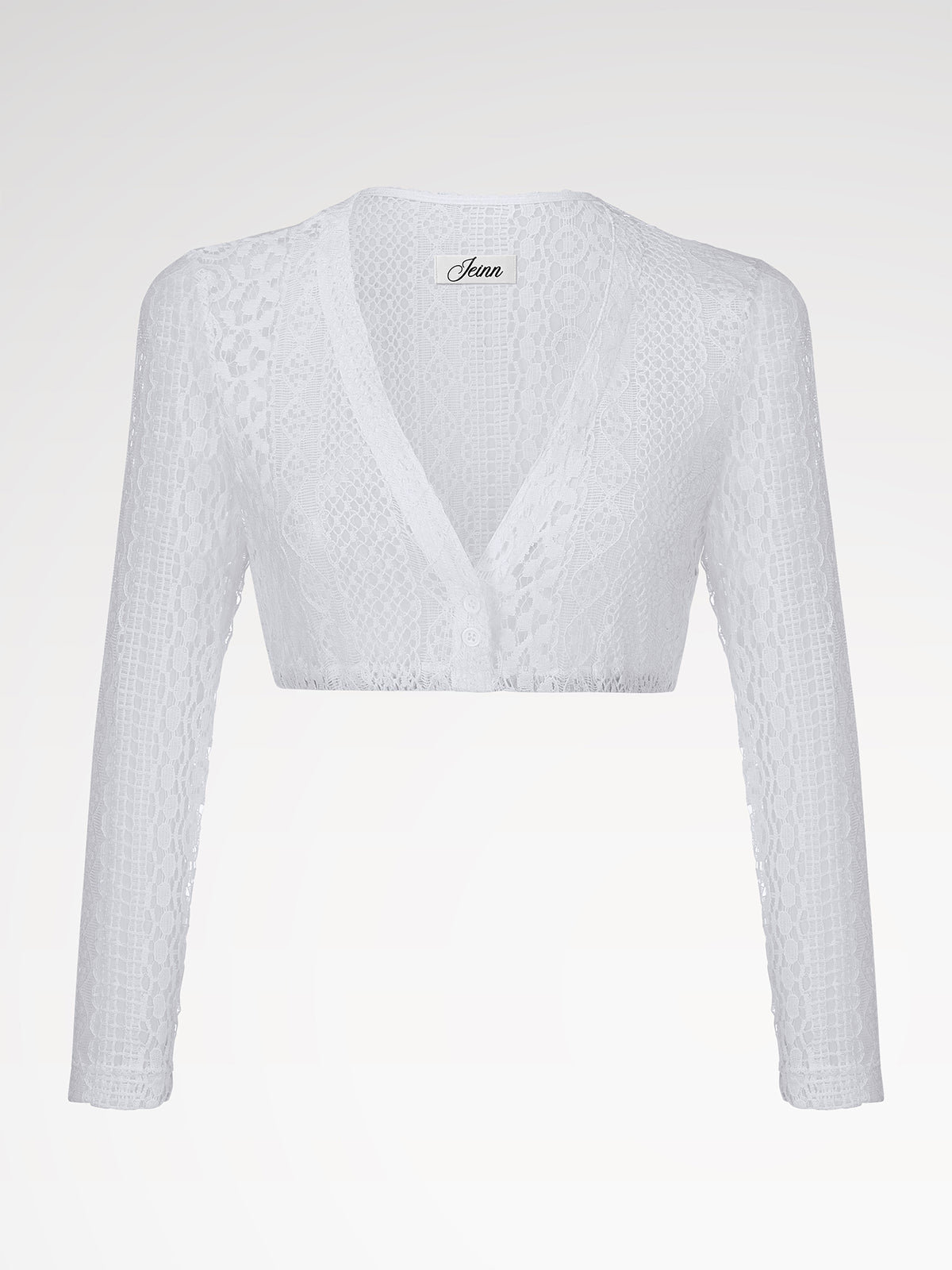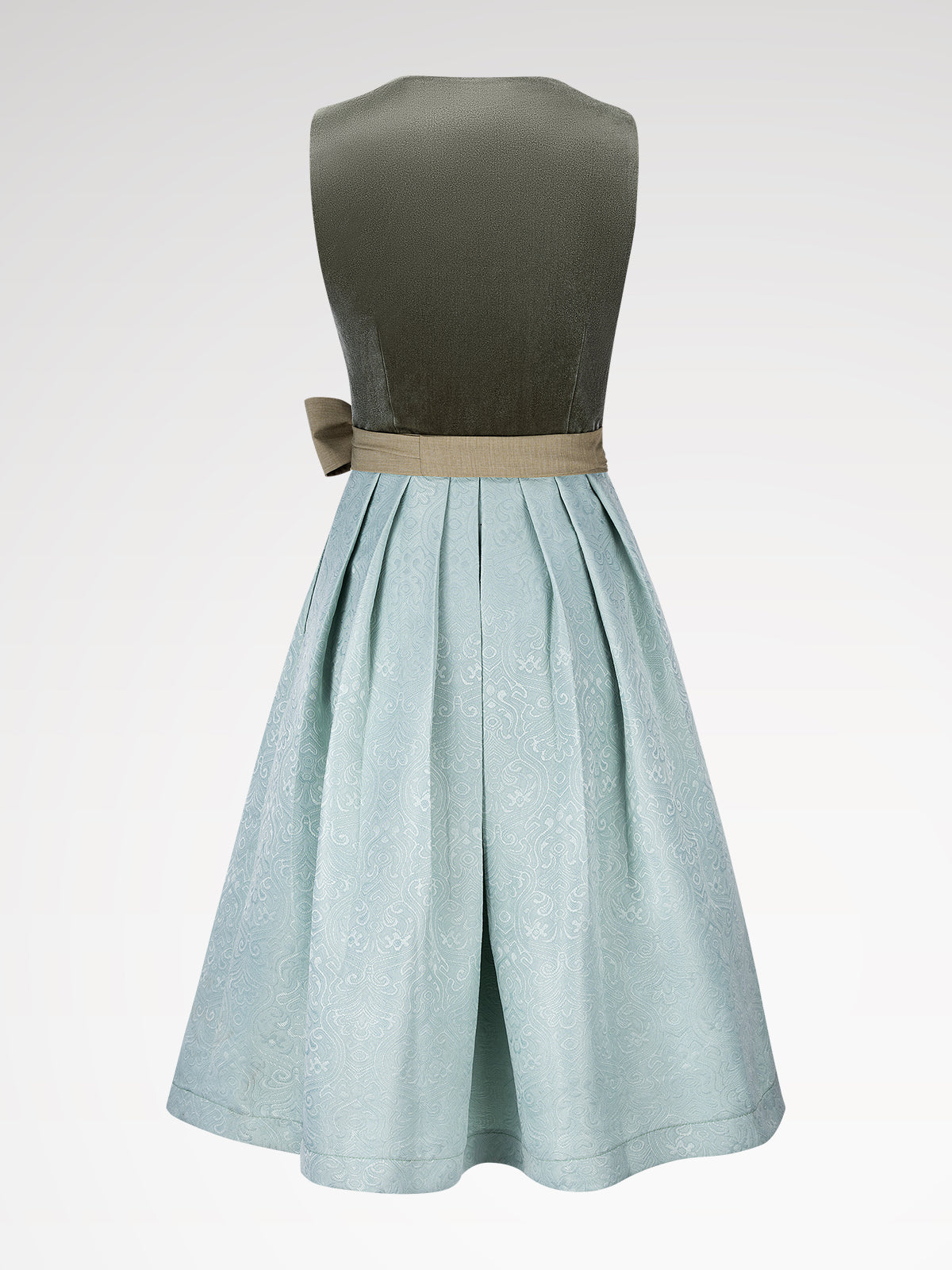The History of the Dirndl - An Overview
The dirndl has its roots in the rural population of the Alpine regions. Originally, it was a simple work garment that allowed women to move comfortably while working on the farm. Over time, however, it evolved into a symbol of regional identity and culture. The simple, practical dirndls became increasingly elegant and fashionable, and various variations began to emerge.
Dirndl with buttons: One detail makes the whole
The dirndl with buttons has its own special charm. The buttons are not only a practical way to fasten the dirndl, but also a decorative element that significantly changes the look of the dirndl.
Design features
Button materials: The buttons on a Dirndl with buttons can be made from various materials. Traditionally, wooden buttons are used, which convey a warm and natural impression. They go perfectly with the traditional dirndls and lend them an authentic charm. Metal buttons are also available, available in various colors and patterns. Silver or gold metal buttons give the dirndl a more elegant and sophisticated touch, while stainless steel buttons have a more robust and modern look. Plastic buttons are also an option, available in many different colors and shapes. They are often inexpensive and easy to work with, which makes them attractive for mass-produced dirndls.
Button arrangement: The arrangement of buttons on a buttoned dirndl can also vary. Some dirndls have buttons arranged in a straight line along the blouse or skirt. This gives the dirndl a simple and classic look. Other dirndls have buttons arranged decoratively, such as in a circle or pattern. This can make the dirndl even more interesting and individual. The number of buttons can also vary. A dirndl can have just a few buttons, primarily for fastening, or many decorative buttons that enchant the entire outfit.
Purposes
The buttoned dirndl is suitable for a variety of occasions. It's a popular outfit at traditional festivals like the Oktoberfest in Munich or other folk festivals in Germany and Austria. The buttons contribute to the authentic atmosphere and make the dirndl even more eye-catching. A buttoned dirndl can also be a beautiful choice for weddings and other formal occasions. A dirndl with elegant metal buttons or delicate wooden buttons adds a special touch to the bride or bridesmaids. Furthermore, a buttoned dirndl is also suitable for everyday occasions. A dirndl with simple plastic buttons can be worn comfortably and stylishly for a stroll through the village or a visit to the city.
Rose Dirndl: A radiant bouquet in the clothing sector
The Rose Dirndl is a variation inspired by the beauty and romance of the rose. The pink color gives the dirndl a soft and feminine touch.
Design features
Color and fabric: The color of the dirndl is, of course, the deciding factor. The color of the dirndl can vary in various shades, from a light, pastel pink to a deep, rich rose red. The fabric used to make the dirndl also plays an important role. Cotton is a popular material because it is breathable and comfortable against the skin.Silk gives the dirndl a noble and shiny appearance, while linen conveys a natural and country-typical impression.
Decorations: The Rose Dirndl can be adorned with various embellishments to further enhance its beauty. Ruffles on the collar or sleeve openings add a romantic touch. Embroidery in the form of flowers or other motifs can also be used to emphasize the rose theme. Metal scraps or pearl pendants can be added to make the dirndl even more eye-catching. The embellishments can be coordinated with the color of the dirndl to create a harmonious overall look.
Purposes
The rose dirndl is ideal for occasions that promote an atmosphere of romance and beauty. A wedding is a perfect occasion to wear a rose dirndl. The pink color perfectly matches the romantic mood and makes the bride or bridesmaids even more beautiful. A rose dirndl can also be a beautiful option for galas and other formal events. It is sure to attract attention and catch the eyes of others. The rose dirndl is also suitable for summer parties or outings in nature. The light rose color creates a fresh, summery effect and is a perfect match for sunny surroundings.
Dirndl Petite: Suitable for every figure
The Petite Dirndl is a version specifically tailored to the needs of smaller women. It offers a perfect fit and an appealing look for women of a smaller stature.
Design features
Cut and fit: The cut of the petite dirndl is tailored to the specific posture of petite women. The blouse and skirt are made in smaller sizes to ensure a perfect fit. The length of the skirt can also be adjusted to find the right balance. A petite dirndl often has a tight fit across the upper body to emphasize feminine curves without being too loose. The sleeves can be made in matching lengths to optimally frame the arms.
Details: Even the details are considered to suit the specific needs of petite women. Embellishments such as ruffles or embroidery are designed on a smaller scale so as not to appear overwhelming. The buttons, if the dirndl has buttons, are also chosen in smaller sizes. Colors and patterns can also be chosen to accentuate the figure of petite women without overpowering them.
Purposes
The Petite Dirndl is suitable for all occasions where a dirndl is generally appropriate. At traditional festivals like Oktoberfest or other folk festivals, shorter women can wear a Petite Dirndl for a comfortable and stylish look. A Petite Dirndl is also an excellent choice for weddings, galas, and other formal occasions. It offers the opportunity to enjoy the beauty and elegance of a dirndl even for women of a smaller stature.
The significance of dirndl variations in our society
The buttoned dirndls, the rose dirndl, and the petite dirndl have far-reaching significance in our society. They are not just items of clothing, but also an expression of regional and national identity. They are worn at many cultural events, fostering awareness of one's own culture and traditions.
In addition, the dirndl variations are also an important economic factor.The production and marketing of dirndls creates jobs and contributes to economic development in the countries where they are produced.
Trends and developments
In recent years, there have been some interesting trends in dirndl variations. One trend is the rediscovery of traditional dirndls in new, more modern interpretations. Designers are experimenting with new materials, colors, and patterns to adapt the dirndl to today's fashion trends.
Another trend is the increasing popularity of dirndl variations in other countries outside the Alpine regions. This demonstrates that dirndl culture is spreading internationally and that more and more people are becoming enthusiastic about these unique garments.
Summary
The Dirndl with buttons, the Rose Dirndl and the Dirndl Petite are fascinating variations of the classic dirndl. They have their own history, design features, and uses. They play an important role in our society, both in terms of cultural identity and the economy. With current trends and the evolution of fashion, these dirndl variations will continue to play an important role in the future and delight people around the world.





Leave a comment
This site is protected by hCaptcha and the hCaptcha Privacy Policy and Terms of Service apply.